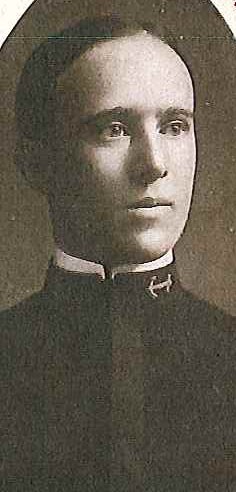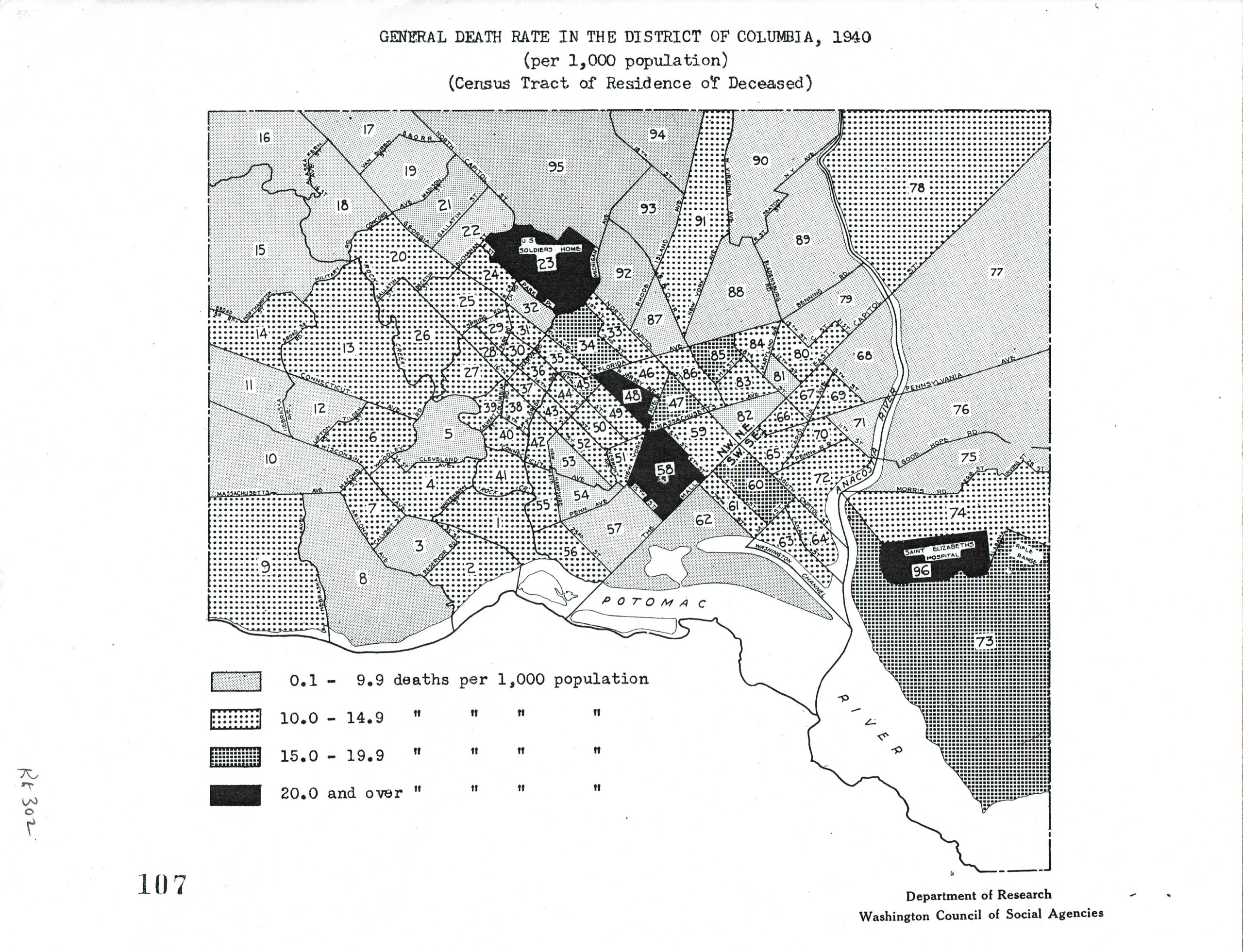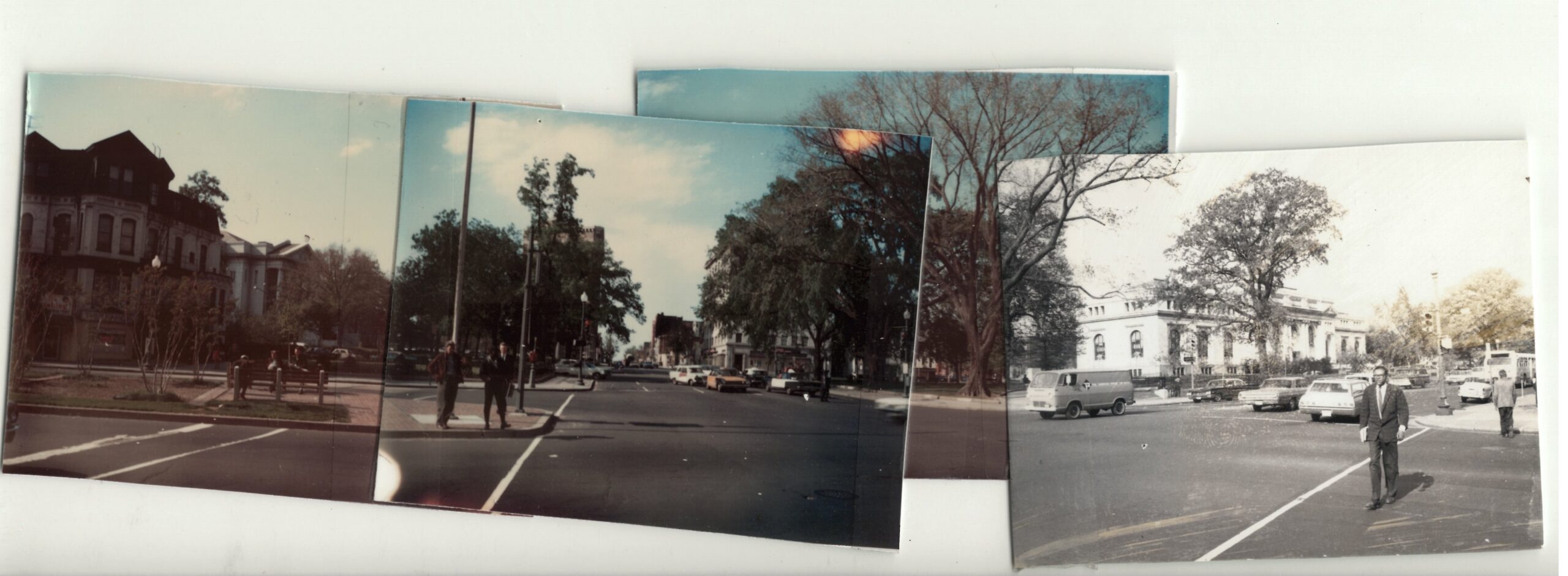If it is 1940 and you’re living between 7th and New Jersey, your days were numbered.
Category: DC History
Mount Vernon Square 1968
DC Law & Order: Cops and Robbers
I’m going to highlight something of interest to me. The National Archives will host a virtual Genealogy Fair with a variety of videos with a live Q&A. Something that may be of interest is M Marie Maxwell’s DC Law & Order: Cops and Robbers or how to look up your DC criminal relatives from the past. That last part is not official. This should be scheduled sometime in early June.
I’ve used some things from what is planned for the geni fair on this blog. The post for Thomas Lawler and James Boswell use a National Archives series, Personnel Case Files, ca. 1861–1950.
Multiracial Family in 1920s DC- a Truxton Circle Story
This is a post for something in the future, so I will try to be vague, as not to ‘spoil’ that post. While doing some research for a Truxton Circle house, I came across a couple who appeared to have been in an interracial marriage. They were married well before Virginia’s Racial Integrity Act of 1924, which was used to outlaw the Loving’s marriage in the case of Virginia v. Loving. However, I discovered, with this family, race can be a fluid and changing thing.
Hester DeaN

Hester Dean was born January 28, 1868 to Catharine Morgan and Robert Dean in Delaware. Her parent’s history was recorded for the Nanticoke Lenni-Lenape Indians of New Jersey in 1980, from an early 1940s source. That history intertwines with the Seeney’s history and American Seventh Day Adventist history.
In the 1870 census the Dean family were living in Kenton, Delaware and listed as ‘White’. This is the opinion of the census taker, so they were either White or white-passing. From an oral history Catharine’s mother was a White woman. Continue reading Multiracial Family in 1920s DC- a Truxton Circle Story
Harry A. Badt and the Washington Sanitary Improvement Homes
I’m writing this post because I link to my own writings for another figure involved with the sell off of Washington Sanitary Improvement Company homes to African American buyers*.
The Colonial Investment Company, which bought the housing inventory from the Washington Sanitary Improvement Co., was represented in the land records by Nathaniel J. Taube, Nathan Levin and James B. Evans. Nathan Levin, president of the Colonial Investment Co and executive vice president of the Colonial Mortgage Corp. died in 1956. On the deeds Nathan Levin was replaced by Harry Asher Badt.
So who was Harry A. Badt?
 He has a Wikipedia page. Harry Asher Badt had a long naval career prior to getting into real estate and retired from the US Navy in 1947 as a Commodore. Naval History and Heritage Command has a biography of his life before and during his service. But very little of his life after service.
He has a Wikipedia page. Harry Asher Badt had a long naval career prior to getting into real estate and retired from the US Navy in 1947 as a Commodore. Naval History and Heritage Command has a biography of his life before and during his service. But very little of his life after service.
He may have gotten connected with the Colonial Investment Company through his wife Jennie Augusta Yudelevit Badt. When researching Harry Badt during the 40s and 50s, I kept finding “Mrs. Harry A. Badt”. She was quite involved with the Hebrew Home for the Aged fundraisers and events. In one December 1952 blurb regarding the Lena Stein Luncheon held at the Hebrew Home, both Mrs. Badt and Mrs. Nathan Levin were mentioned as honor roll members.
Harry Badt was involved with the Colonial Investment Co. prior to that. In 1947 he was mentioned as the spokesman for the company for a project to build homes for GIs (veterans). December 1953, it was announced in the (Washington) Times Herald that retired Commodore Harry Badt was the treasurer in charge of building inspection and disbursement for Colonial Investment Company. In 1957 Badt got his DC real estate license and was the vice president and treasurer of Colonial Investment Co.
He died in Bethesda, MD in 1967.
*That other figure is George Basiliko. I have several posts about that land lord and real estate professional: WSIC-1950s Sell Off- George Basiliko; George Basiliko Keeps Showing Up in My Truxton Circle Property Searches Pt 1 & Part 2.
Preparing for Washington DC History Conference- Black Homeowners of Truxton Circle
I’m very excited to announce that I’ll be presenting at the 2024 DC History Conference and I’ll be talking about the Black Homeowners of Truxton Circle.
So if you are available Saturday, April 6th at 10:15 at the Neighborhood History and Housing panel, come see me. Ask some questions.
 You can register now for the April conference, and take a look at the program here.
You can register now for the April conference, and take a look at the program here.
So in order to get ready for the conference I’m going to slightly ignore the blog for a bit. Also I have some personal things I need to deal with. Even once the conference is done, there will still be some personal things that will need to be dealt with, maintained? So I’m thinking of a schedule of one researched post a week with a few Memory Lane posts. I’d like to get around to actually getting something published outside of the InShaw blog about Truxton Circle and that’s going to take some focus and time, in addition to some of those personal things I’ve been ignoring.
Fact of life- people move
and not just during earthquakes.
People move. If you do genealogy you’ll find that people move around, which is a pain in the butt locating people. The Help comes from a line of lumberjacks, who ran around the northern US border following trees, and they had a common last name. So it is a guess which state they were in for any given census. My people in NC, though staying in the same two counties, moved around those counties, a lot. So that comes in mind when people say gentrification moves people out of their homes. Life moves people out of their homes. Americans are movers with fantasies that they are stable.
Most people move. A few stay, but in time they move too. In the arguments over gentrification the one family that has been in the same house for 30 years, but easily forgotten are all the other people on the street who stayed for 1 -5 years and moved. Some a few blocks over, some completely out of the neighborhood. Moving people are a bit of a problem for me with the census project as I look at the city directories, which you can find on-line in Google Books: Boyd’s directory of the District of Columbia, 1892 and Boyd’s directory of the District of Columbia, 1903. I can’t speak to the accuracy of these sources as I don’t know how the data was collected, but it’s the best source out there, short of hopping in a time machine. In my own house there were one set of people in 1892, then in the 1900 Census 11 people, then in the 1903 directory one person, all with different names. Considering that many people were renters, there really wasn’t anything tying them to one house, thus freeing them to move.
This page contains a single entry by Mari published on July 16, 2010 8:28 AM.
Scraps of DC History- RLA
If I ever, ever, which looks like not at all on my current path, write a history of urban renewal from the neighborhood perspective in Washington, DC I will have to include the District of Columbia Redevelopment Agency (RLA). According to the US Government Organization Manual the RLA was:
Created by act of Aug 2, 1946 (60 Stat. 790), to provide for replanning, rebuilding, and rehabilitation of slum and blighted areas in the District of Columbia. The District of Columbia Self-Government and Governmental Reorganization Act of Dec 24, 1973 (87 Stat. 774), established the agency as an instrumentality of the District of Columbia government, effective July 1, 1974
A post war agency to deal with slums turned into something that helped with the destruction of SW. Which who knows, may have needed destroying in parts, but not to the extent it did with the SW Urban renewal in the 50s and 60s.


